2019 年广西民族大学翻译硕士英语考研真题 B 卷
Part I. Basic English Knowledge (35 points)
Section A: Multiple-choice (20 points)
Directions: There are forty multiple-choice questions in this section. Choose the
best answer to each question. Please write your answers on the Answer Sheet.
1.
Hoping to make his employees more comfortable,______________.
A. a dozen new chairs were purchased by the new boss
B. the new boss purchased a dozen new chairs.
C. the new boss had purchased a dozen new chairs.
D. a dozen new chairs had been purchased by the new boss.
I knew I could not complete the task______________.
2.
A. by the boss came
B. until the boss has come
C. when the boss comes
D. before the boss came
3.
Only after______________his homework______________to watch TV.
A. he has finished; is he allowed
B.
has
he
finished; is he allowed
C. he has finished; he is allowed
D.
has
he
finished; he is allowed
4.
craftsmen______________comfortably.
This
kind
of
glasses
manufactured
by
experienced
A. is worn
B. wears
C. wearing
D. wear
Victor took a bus and headed for home,______________if his wife would have him
5.
back.
A. not to know
D. not having known
Unfortunately there are times when I’ve played when I probably______________and
C. not knowing
B. not known
6.
it has cost me a lot.
A. couldn’t have
B. shouldn’t have
C. wouldn’t have
D.
mustn’t have
7.
famine.
Most peasants were reduced to______________grass and leaves during the severe
A. eating
B. eat
C. have eaten
D. ate
�
8.
They______________fireworks in the stadium last night to celebrate the win.
A. set in
B. set out
C. set against
D. set off
9.
In order to marry his wife, Tommy______________to Islam.
A. changed
B. exchanged
C. converted
D. turned
10. This morning, my work was______________by a constant stream of visitors.
A. hampered
B. tangled
C. reversed D. perplexed
The
11.
the
of______________society nowadays.
growing
size
of
population
is______________major
concern
A. /; the
B. a; /
C. a; the
D. the; the
12. It is not fair that you come home after a bad day at work and______________your
wife and kids.
A. take it off on
B. take it on with
C. take it out on
D. take it up with
13. Recent editions of the Chinese classic, based on manuscripts more authoritative
than those hitherto
available, have rendered previous editions______________.
A. obstinate
B. inaccessible C. illegible
D. obsolete
14. Most good writers use every means______________to make the readers’ way smooth
and easy.
A. at their disposal
B. at their request
C. at their will
D. at their convenience
15. The first keynote speaker really showed his remarkably keen______________into
human nature.
A. perception
B. intellect
C. understanding
D. insight
16. This region is expected to return to______________economic growth this year
and next.
A. respective
B. respect
C. respectful
D. respectable
�
17. An increasing proportion of our population, unable to live without advanced
medical______________, will
become progressively more reliant on expensive technology.
A. interference B. interruption
C. intervention D. interaction
18.______________in an atmosphere of simple living was what his parents wished for.
A. He was educated
B. He educated
C. His being educated
D. He to be educated
love
19. I
overtly______________.
the
poetry
of
the
Middle
Age
despite
its
tendency
to
be
A. diverting
B. didactic C. emotional
D. romantic
20. Most people believe that epidemics occur______________after a natural disaster,
but it is not true.
A. spontaneously
D. instantaneously
B. simultaneously
C. homogeneously
21. Although the school still decided to carry it out, most parents______________the
new regulation set by the
school.
A. objected to
Brooklyn,
B. rebelled against C. fought against
22. In
to
police
heed______________orders.
A. evaluation
23. If they conspire with each other to exclude potential competitors, the
successful tender shall be______________.
D. examination
D. struck for
C. estimation
B. evacuation
persuade
people
to
officers
found
it
hard
A. detoxified
B. nullified
C. rectified
D. ramified
24. All the workers in the company are______________free medical care.
A. provided for B. involved in
C. connected with
D.
entitled to
25. The flowers______________sweet in the botanic garden attract the visitors to
the beauty of nature.
A. smelling B. to smell C. smelt
D. to be smelt
26. The Pentagon cannot point to any______________gains resulting from the
interrogation techniques used at
�
Guantanamo.
A. intelligent
B. intellectual C. intelligence
D. intellect
27. She is reliable and thoughtful, so her friends like to______________their
trouble to her.
A. pour down
B. pour into
C. pour forth
D. pour on
28. The teacher suggested that her students______________experiences with ESP.
A. write a composition on their
B. to write a composition about the
C. wrote some compositions of their
D. had written some compositions of their
29. Many animals have a______________heart, such as fish.
A. bicentennial B. bikini
C. bicameral
D. binocular
30. It would be a blessing for the human race if the mosquito could be______________.
A. wiped up B. wiped away
C. wiped off
D. wiped out
31. I am sorry I have no time to______________more detail or give you an account
of other cities of interest.
A. bring into
B. take into
C. come into
D. go into
32. It is not______________much the language as the background that makes the book
difficult to understand.
A. that B. so
C. as
D. very
33. Mobile Karaoke may be______________to Japan, but the love affair with mobile
phone is worldwide.
A. weird
B. strange
C. odd
D. peculiar
34. While he had the fever, he______________for days.
A. raved
B. sniggered
C. tittered D. perforated
35. He was brought before the______________for trial.
�
A. tribunal B. isle
C. granary
D. observatory
36. We believe that no country should interfere with the internal______________of
another country.
A. matter
B. matters
C. affairs
D. affair
37. I told my sister that I had one million dollars. She really
the story.
A. fell in
B. fell with
C. fell for D. fell through
38. Bebop’s legacy is______________one: bebop may have won jazz the right to be
taken seriously as an art form,
but it______________jazz’s mass audience, which turned to other forms of music
such as rock.
A. a mixed; alienated
C. an ambiguous; aggrandized
B. a troubled; seduced
D. a valuable; refined
39. Treaties are only______________the governments that sign them, and governments
change.
A. as long as
B. as far as
C. as good as
D. so long as
40. Although based on an actual event, the film lacks______________. The director
shuffles events, simplifies the
tangle of relationships, and______________documentary truth for dramatic power.
B. verisimilitude; sacrifices
A. conviction; embraces
C. expressiveness; exaggerates
D. realism; substitutes
Proofreading and Error Correction (15 points)
Section B:
Directions: The following passage contains 10 errors. Each indicated line contains
a maximum of ONE error. In each case, only ONE word is involved. You should proofread
the passage and correct it. Please write your answers on the Answer Sheet.
Standing tall as the defining landmark of Toronto is the CN
Tower, Canada’s National Tower. On 553.33 meters, it is the
world’s
freestanding tower
Canadian
tallest
symbol
and a
41.
of
achievement
recognized
around
the world.
This
architectural
triumph
is
an
engineering wonder
of
the
modern
world
and
widely regarded as the iconic symbol of tourism for Toronto.
With breathtaking views from three observation levels, the CN
Tower is a worldly class entertaining and dining destination and
must-see attraction when visiting Toronto.
The
Toronto’s
daylight hours since it opened 31 years before. But at night, the
dimly lit giant fades nearly to black. Not anymore. Last week, it
was illuminated for the first time in a dazzling light show. CN
Tower
dominated
world’s
skyline
tallest
during
Tower
claim
the
to
be
can
now
CN
has
42.
43.
44.
illuminated
structure. The newly lit tower will consume up 60 percent less
45.
�
electricity than the old scheme. It is an energy efficient, costly
effective
architecturally
stunning
result
that
and
whole
46.
47.
Canadians can be proud of. On a clean night, residents will be
able to
illuminated
hoped that
tower. It
spot
the
is
the
48.
new
as
be
for
beacon
that
lighting will help end Toronto’s five-year tourist slump. It will
serve
a
experiences
Canada. Throughout the year, the lighting will pay attribute to 50.
national holidays, special occasions and some citywide events.
Part II.
Reading Comprehension (35 points)
representing extraordinary 49.
throughout
tourism
Toronto
found
and
can
in
Section A (15 points)
Directions: There are 3 passages in this section. Each passage is followed by some
questions or unfinished statements. For each of them there are four choices marked
A), B), C) and D).You should decide on the best choice and write your answers on
the Answer Sheet.
Passage one
Questions 51 to 55 are based on the following passage.
“Museum” is a slippery word. It first meant (in Greek) anything consecrated to
the Muses: a hill, a
shrine, a garden, a festival or even a textbook. Both Plato’s Academy and Aristotle’
s Lyceum had a mouseion, a muses’ shrine. Although the Greeks already collected
detached works of art, many temples–notably that of Hera at Olympia (before which
the Olympic flame is still lit) –had collections of objects, some of which were
works of art by well-known masters, while paintings and sculptures in the
Alexandrian Museum were incidental to its main purpose.
The Romans also collected and exhibited art from disbanded temples, as well as
mineral specimens, exotic plants, animals; and they plundered sculptures and
paintings (mostly Greek) for exhibition. Meanwhile, the Greek word had slipped into
Latin by transliteration (though not to signify picture galleries, which were called
pinacothecae) and museum still more or less meant “Muses’ shrine”.
The inspirational collections of precious and semi-precious objects were kept in
larger churches and monasteries – which focused on the gold-enshrined, bejewelled
relics of saints and martyrs. Princes, and
later merchants, had similar collections, which became the deposits of natural
�
curiosities: large lumps of amber or coral, irregular pearls, unicorn horns, ostrich
eggs, fossil bones and so on. They also included coins and gems–often antique
engraved ones – as well as, increasingly, paintings and sculptures. As they
multiplied and expanded, to supplement them, the skill of the fakers grew
increasingly refined.
At the same time, visitors could admire the very grandest paintings and sculptures
in the churches, palaces and castles; they were not “collected” either, but
“site-specific”, and were considered an integral
part both of the fabric of the buildings and of the way of life which went on inside
them–and most of the buildings were public ones. However, during the revival of
antiquity in the fifteenth century, fragments of antique sculpture were given higher
status than the work of any contemporary, so that displays of antiquities would
inspire artists to imitation, or even better, to emulation; and so could be
considered Muses’ shrines in the former sense. The Medici garden near San Marco
in Florence, the Belvedere and the Capitol in Rome were the most famous of such
early “ inspirational ” collections. Soon they multiplied, and, gradually,
exemplary “modern” works were also added to such galleries.
In the seventeenth century, scientific and prestige collecting became so widespread
that three or four collectors independently published directories to museums all
over the known world. But it was the age of
revolutions and industry which produced the next sharp shift in the way the
institution was perceived: the fury against royal and church monuments prompted
antiquarians to shelter them in asylum-galleries, of which the Musee des Monuments
Francais was the most famous. Then, in the first half of the nineteenth century,
museum funding took off, allied to the rise of new wealth: London acquired the
National Gallery and the British Museum, the Louvre was organized, the Museum-Insel
was begun in Berlin, and the Munich galleries were built. In Vienna, the huge
Kunsthistorisches and Naturhistorisches Museums took over much of the imperial
treasure. Meanwhile, the decline of craftsmanship (and of public taste with it)
inspired the creation of “improving” collections. The Victoria and Albert Museum
in London was the most famous, as well as perhaps the largest of them.
51. The sentence “ Museum is a slippery word ” in the first paragraph means
that______________.
A. the meaning of the word didn’t change until after the 15th century.
B. the meaning of the word had changed over the years.
C. the Greeks held different concepts from the Romans.
D. princes and merchants added paintings to their collections.
�
52. “… the skill of the fakers grew increasingly refined” in the third paragraph
means that______________.
A. there was a great demand for fakers.
B. fakers grew rapidly in number.
C. fakers became more skillful.
D. fakers became more polite.
53. Painting and sculptures on display in churches in the 15th century
were______________.
A. collected from elsewhere.
B. made part of the buildings.
C. donated by people.
D. bought by churches.
54. Modern museums came into existence in order to______________.
A. protect royal and church treasures.
B. improve existing collections.
C. stimulate public interest.
D. raise more funds.
55. Which is the main idea of the passage?
A. Collection and collectors.
B. The evolution of museums.
C. Modern museums and their functions.
D. The birth of museums.
Passage two
Questions 56 to 60 are based on the following passage.
Most of us are taught to pay attention to what is said—the words. Words do provide
us with some information,but meanings are derived from so many other sources that
it would hinder our effectiveness as a partner to a relationship to rely too heavily
on words alone. Words are used to describe only a small part of the many ideas we
associate with any given message. Sometimes we can gain insight into some of those
associations if we listen for more than words. We don’t always say what we mean
or mean what we say. Sometimes our words don’t mean anything except “ I’m letting
off some steam. I don’t really want you to pay close attention to what I’m saying.
Just pay attention to what I’m feeling.” Mostly we mean several things at once.
A person wanting to purchase a house says to the current owner, “This step has
to be fixed before I’ll buy.” The owner says,“ It’s been like that for years.”
Actually,the step hasn’t been like that for years,but the unspoken message is
“ I don’t want to fix it. We put up with it. Why can’t you?” The search for
a more expansive view of meaning can be developed of examining a message in terms
of who said it, when it occurred,the related conditions or situation,and how
it was said.
�
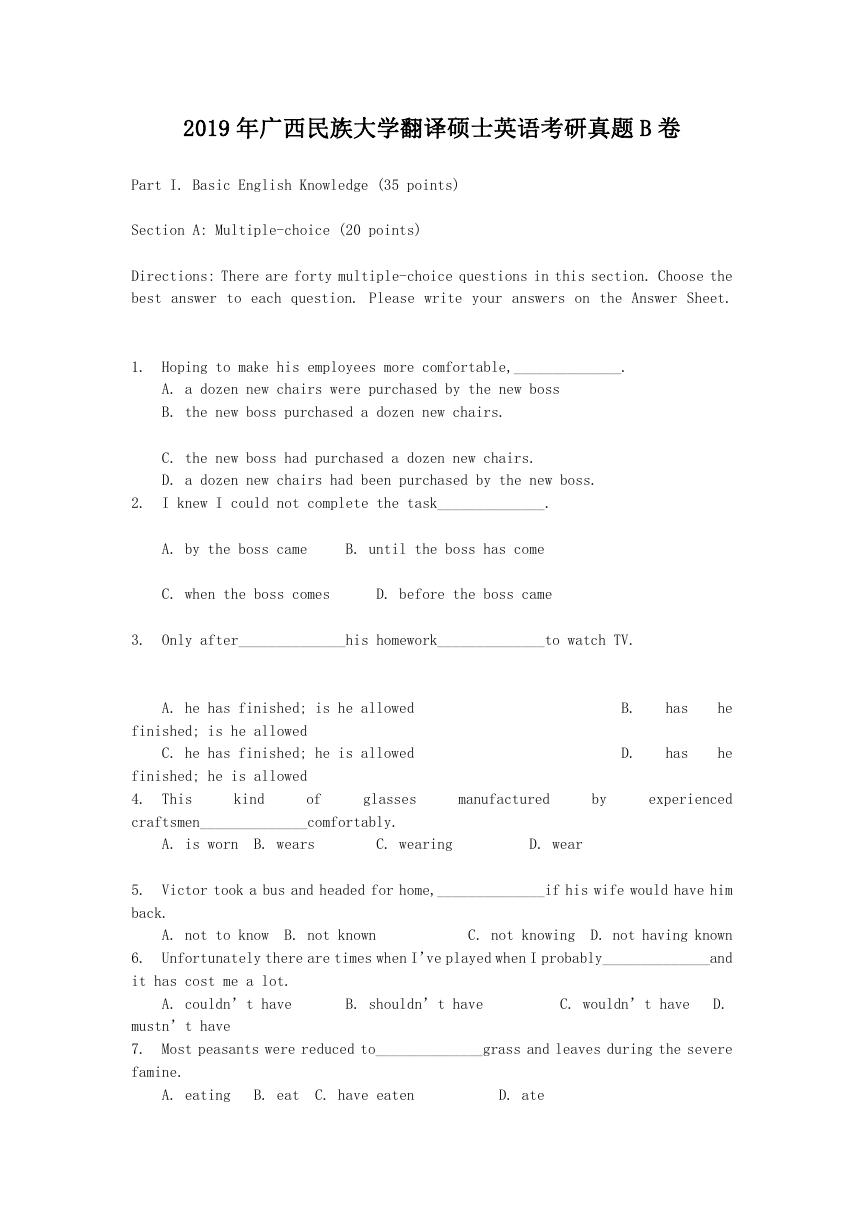
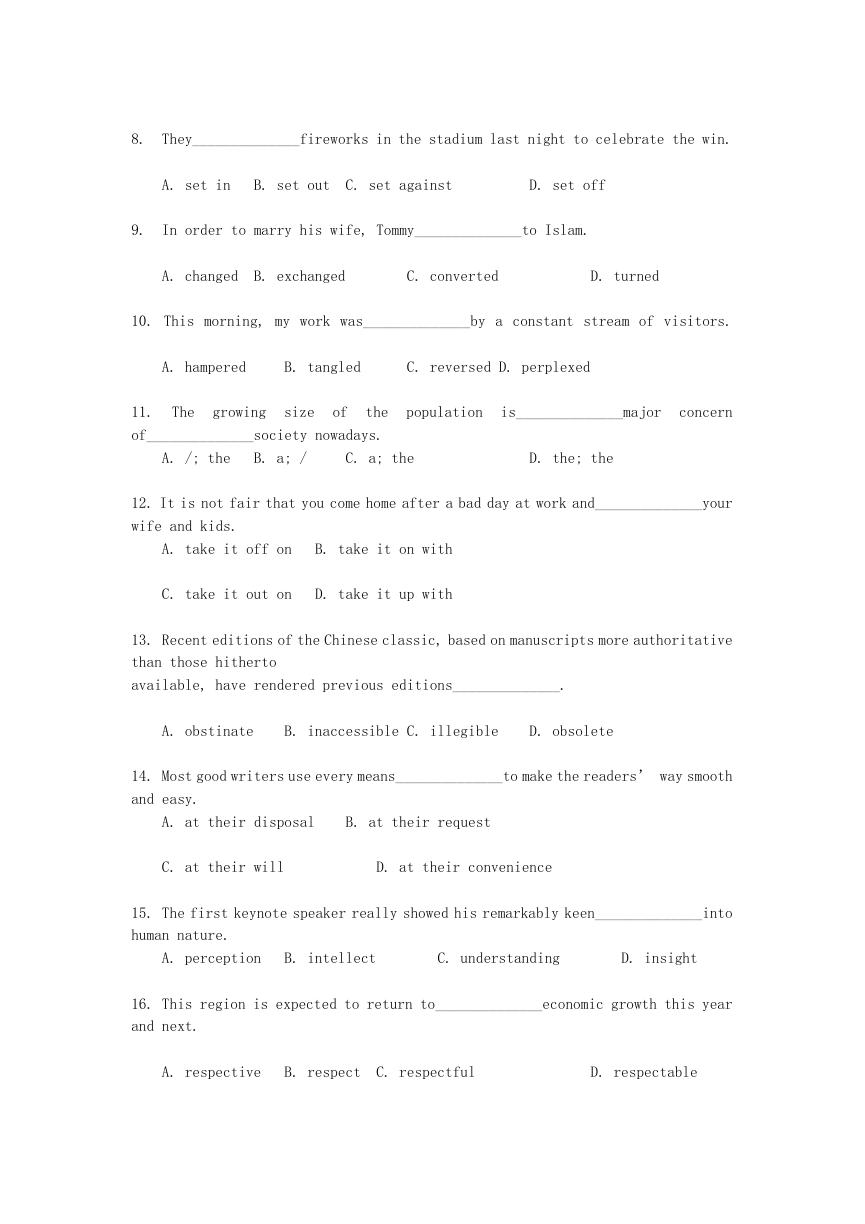
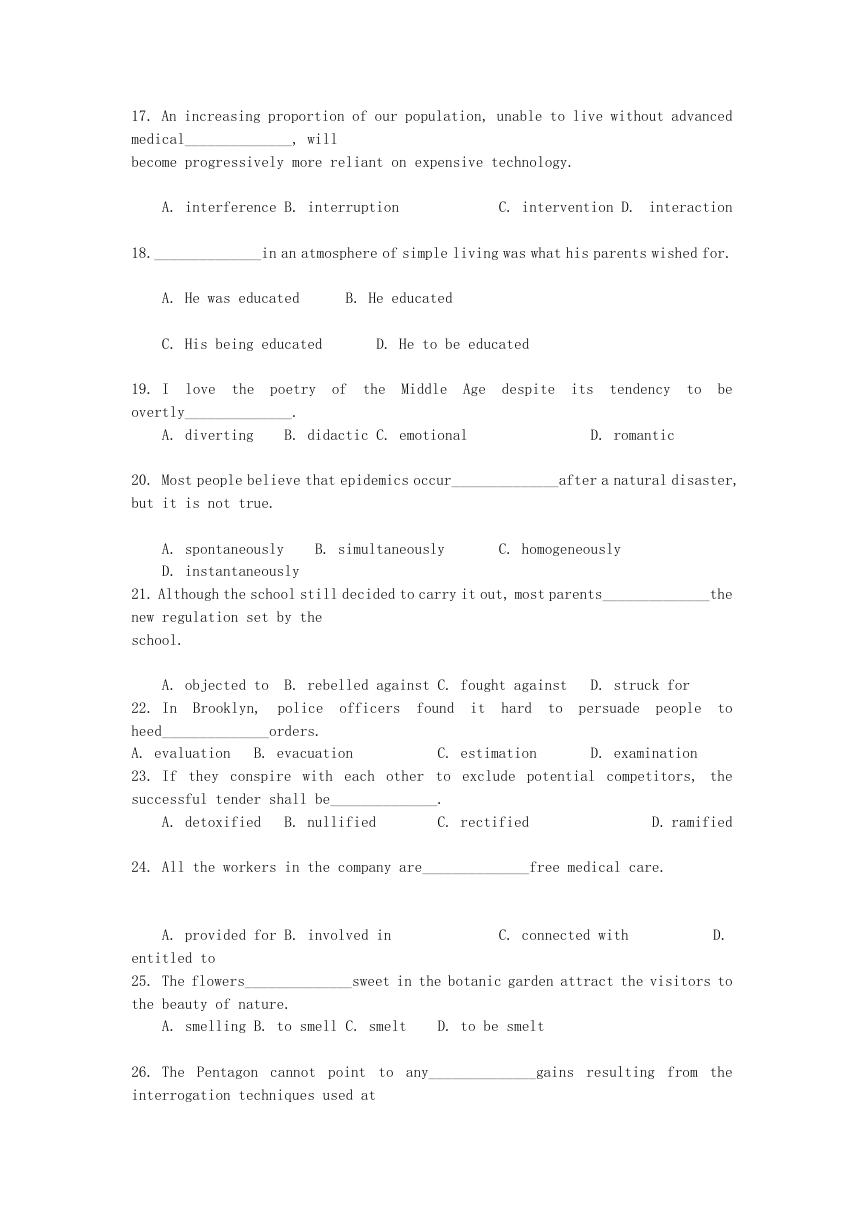

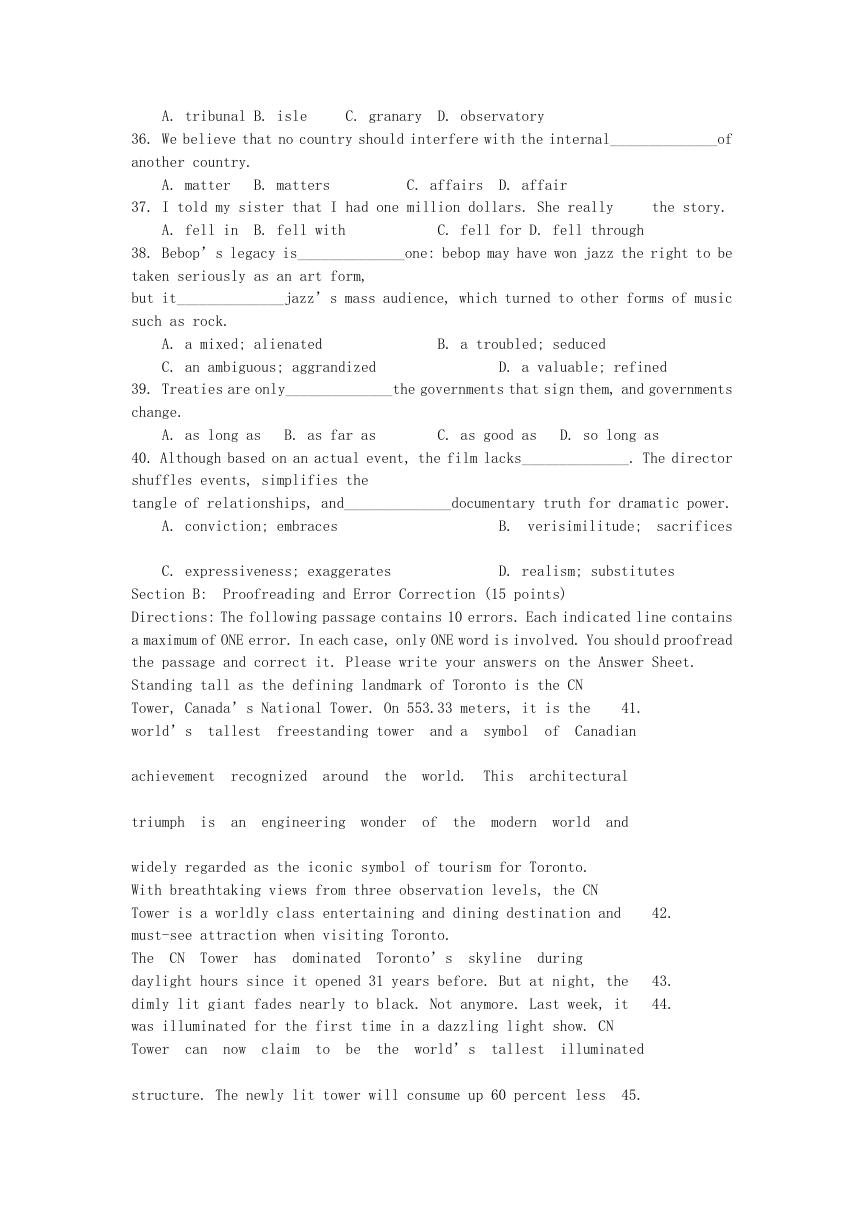
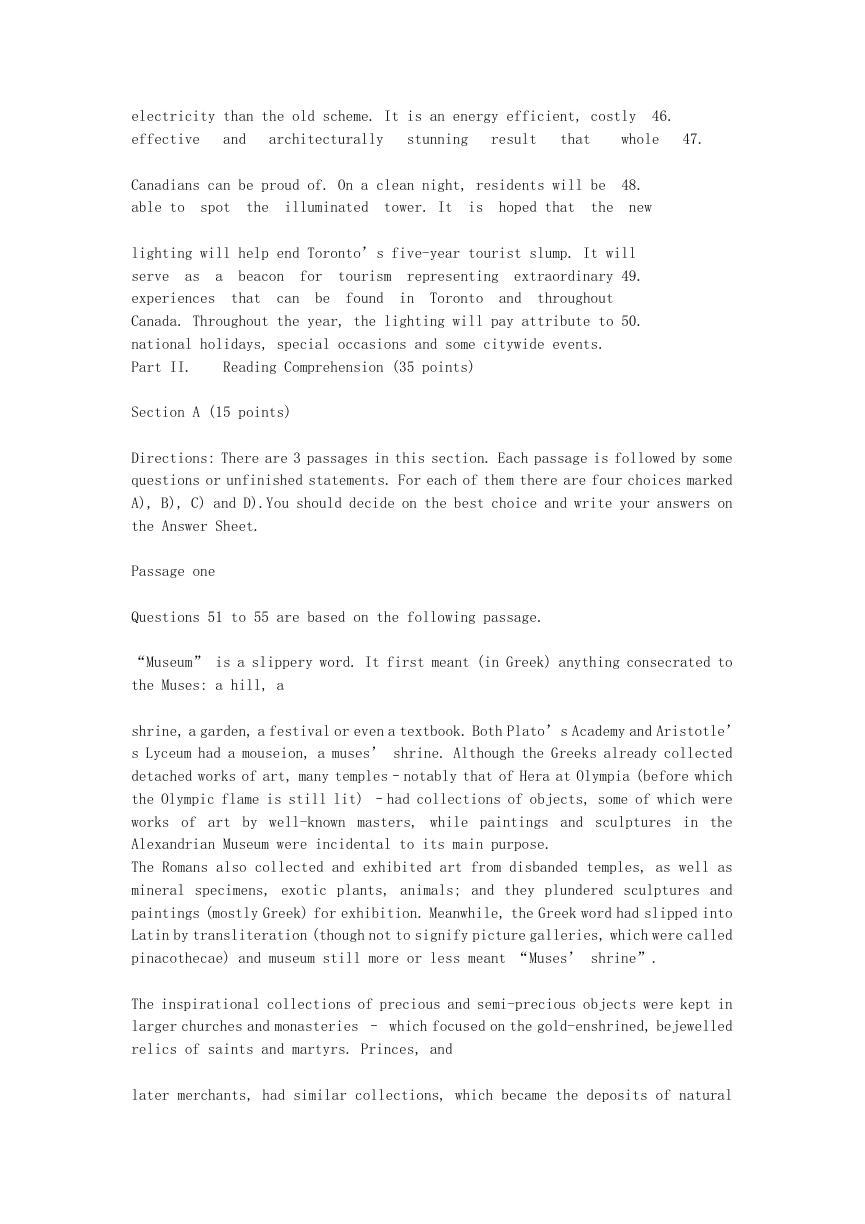
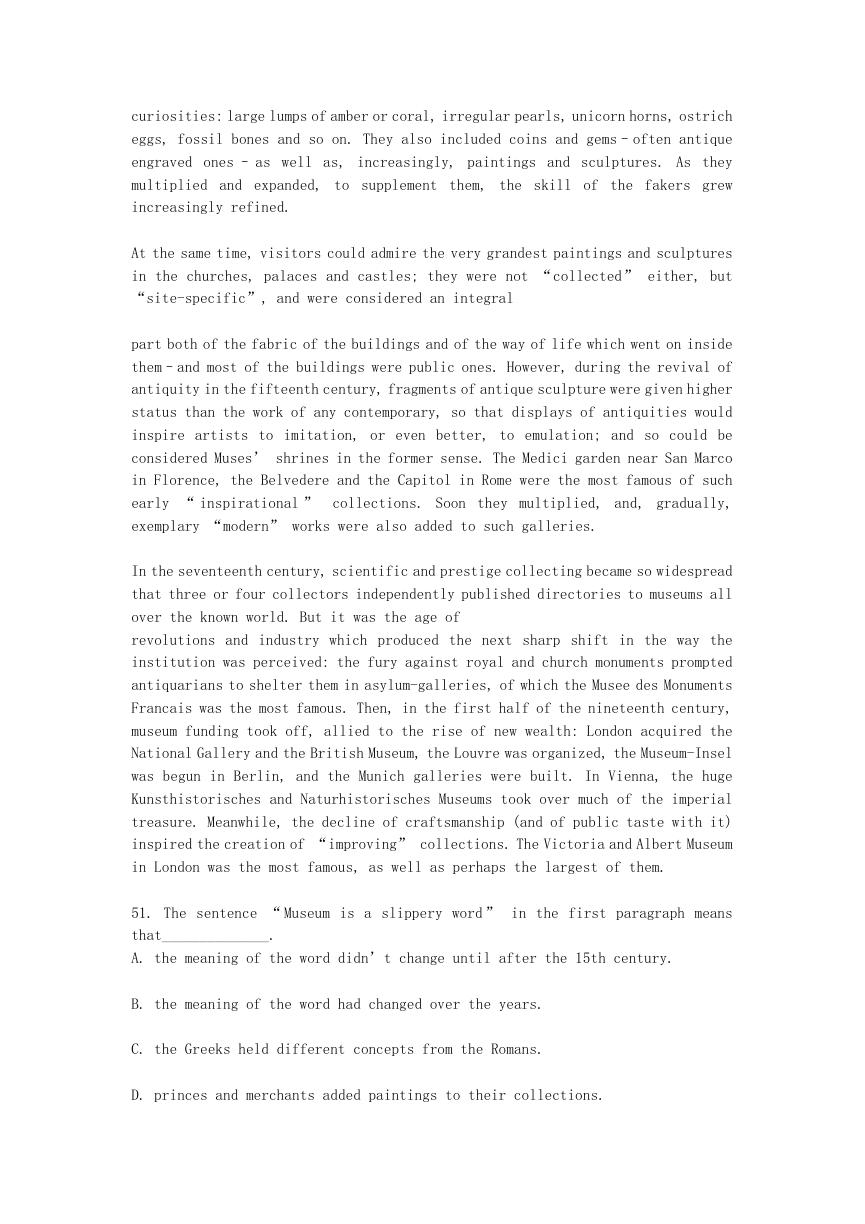









 2023年江西萍乡中考道德与法治真题及答案.doc
2023年江西萍乡中考道德与法治真题及答案.doc 2012年重庆南川中考生物真题及答案.doc
2012年重庆南川中考生物真题及答案.doc 2013年江西师范大学地理学综合及文艺理论基础考研真题.doc
2013年江西师范大学地理学综合及文艺理论基础考研真题.doc 2020年四川甘孜小升初语文真题及答案I卷.doc
2020年四川甘孜小升初语文真题及答案I卷.doc 2020年注册岩土工程师专业基础考试真题及答案.doc
2020年注册岩土工程师专业基础考试真题及答案.doc 2023-2024学年福建省厦门市九年级上学期数学月考试题及答案.doc
2023-2024学年福建省厦门市九年级上学期数学月考试题及答案.doc 2021-2022学年辽宁省沈阳市大东区九年级上学期语文期末试题及答案.doc
2021-2022学年辽宁省沈阳市大东区九年级上学期语文期末试题及答案.doc 2022-2023学年北京东城区初三第一学期物理期末试卷及答案.doc
2022-2023学年北京东城区初三第一学期物理期末试卷及答案.doc 2018上半年江西教师资格初中地理学科知识与教学能力真题及答案.doc
2018上半年江西教师资格初中地理学科知识与教学能力真题及答案.doc 2012年河北国家公务员申论考试真题及答案-省级.doc
2012年河北国家公务员申论考试真题及答案-省级.doc 2020-2021学年江苏省扬州市江都区邵樊片九年级上学期数学第一次质量检测试题及答案.doc
2020-2021学年江苏省扬州市江都区邵樊片九年级上学期数学第一次质量检测试题及答案.doc 2022下半年黑龙江教师资格证中学综合素质真题及答案.doc
2022下半年黑龙江教师资格证中学综合素质真题及答案.doc